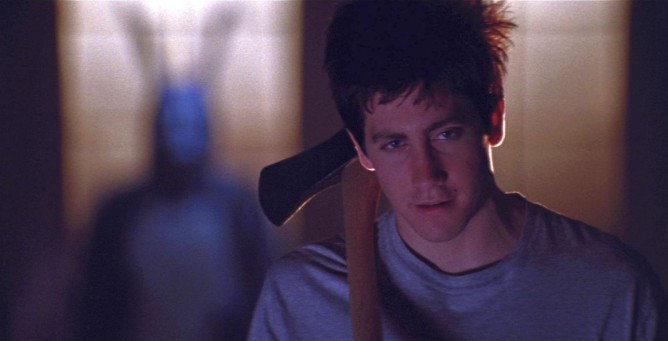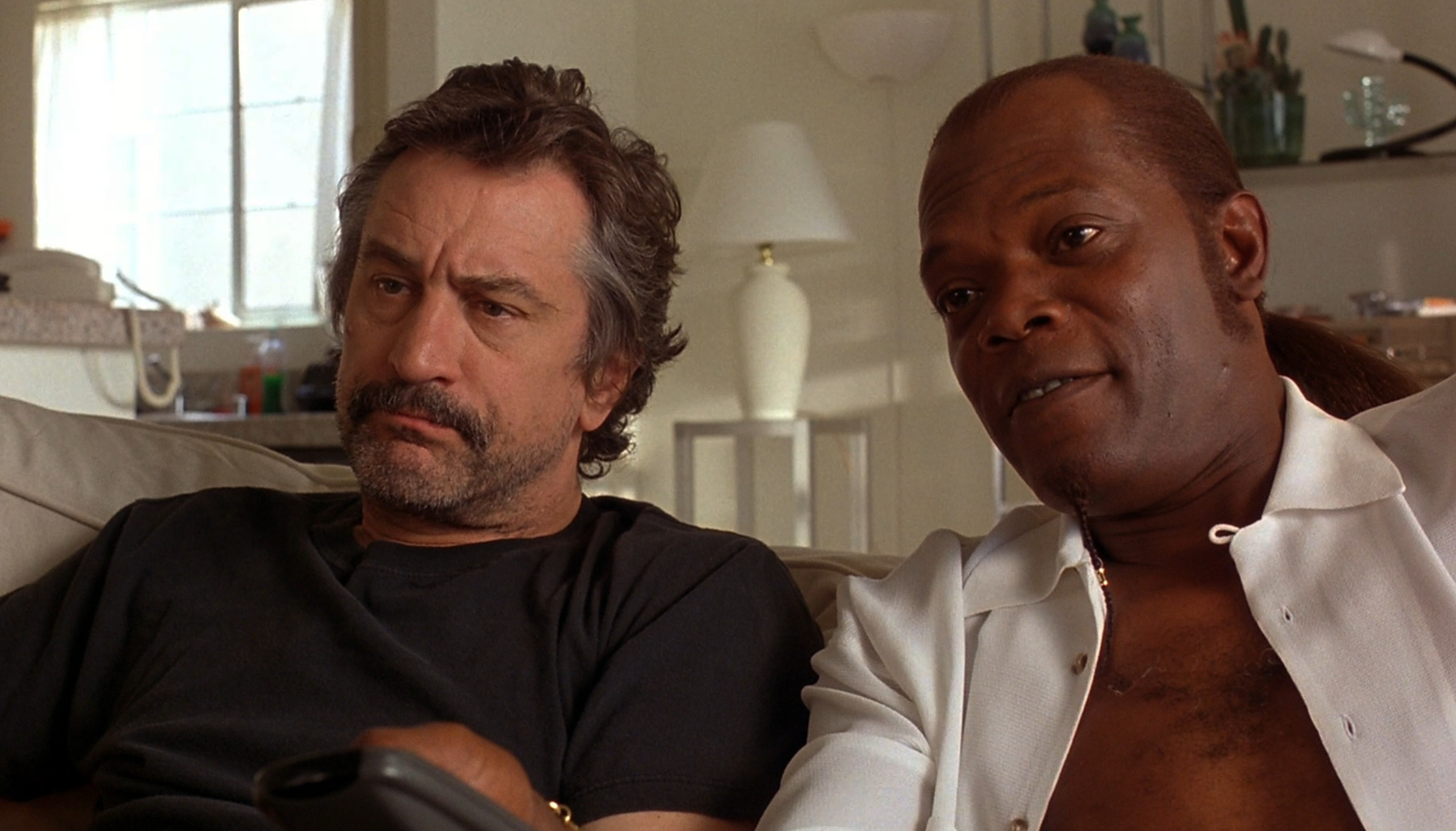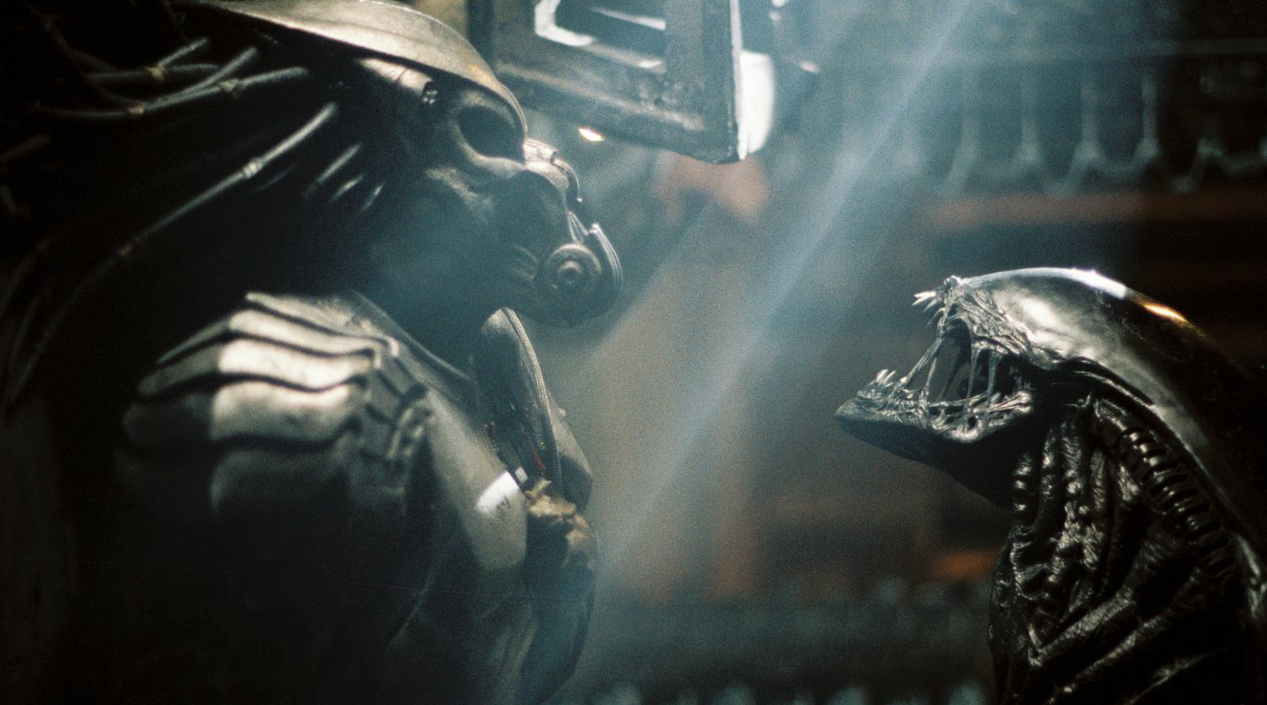Masters of the universe.
With the re-release of Donnie Darko for its 15th anniversary – the original theatrical version, not the unfortunate director’s cut – it seemed like a good opportunity to take a look at cinematic universes that existed prior to the one we all know best, the Marvel Cinematic Universe (or MCU, for those who prefer acronyms). They may not be cinematic universes in the way Marvel has approached the concept, planning its release strategy in stages that will increasingly coalesce its vision. But movies sharing obvious DNA with one another, in ways that are not always readily apparent, have existed for years.
Of course, not every series of movies with things in common can be said to be a part of a universe. Some are just sequels, which does make them part of the same universe, but in a manner that goes without saying. Some are just movies that contain the same characters as other movies, possibly because they are popular characters from literature. But then there are those movies that clearly exist side by side with other movies, even if neither movie really requires the other to exist. (Though that might actually be a point of deviation from the MCU, since lately you need to have seen every other MCU movie to know what’s going on in the next one.)
Donnie Darko makes a good jumping off point. Richard Kelly came out with his head-tripping time-travel coming-of-age movie/satire of the 1980s (have we covered everything?) in 2001, bursting on the scene as if from nowhere. He introduced enough enthralling concepts about wormholes and portals to keep a stoner occupied for days, though mostly just left them there for our consideration, as if begging for further exploration in later movies. And then he kinda sorta did that in The Box, his 2009 psychological thriller about a mysterious box bearing a button, the pressing of which will kill a stranger. Completely separate from his main premise, Kelly introduces those portals again, as wavy, watery cubes that are dead ringers for the snake-like substances that emanate from the stomachs of Darko’s characters. Few hardcore Darko fans were willing to go along with Kelly’s attempts to create a Kellyverse at this point, though, as his perplexing Southland Tales had already frittered away a lot of his Darko good will, as had the first 45 minutes of The Box before these callbacks to Darko make their first appearance. As Kelly has yet to direct another film in the seven years since, the Kellyverse seems to have died before it even really began.
Another universe of sorts has grown out of the works of Elmore Leonard. You could say this is just an instance of characters recurring, as Daniel Schechter’s Life of Crime (2014) features a younger version of the characters Louis Gara and Ordell Robbie, who first appeared on screen in Quentin Tarantino’s Jackie Brown (1997). They recur because Leonard brought characters from his 1978 book The Switch (adapted into Life of Crime) back for his 1992 book Rum Punch (adapted into Jackie Brown), but because of the times the films were made, they are obviously played by different actors (Robert DeNiro and then John Hawkes for Louis, Samuel L. Jackson and then Yasiin Bey for Ordell). But another character from Brown is ATF agent Ray Nicolette, who also appears in Steven Soderbergh’s Out of Sight (1998) – both times played by Michael Keaton. It may have been more of a cute casting choice on Soderbergh’s part than a real attempt to place the two movies in the same universe, but the effect is the same.
Then of course there is the View Askewniverse, containing the characters created by Kevin Smith – one of whom is also played by Smith. Jay (Jason Mewes) and Silent Bob (Smith) are just the two most prominent characters to show up in multiple Smith films, even though only in a few cases (like Clerks and Clerks 2) are the movies intended as direct sequels to each other.
Some universes are created just by mashing together previously unrelated concepts, a particular proclivity of the horror genre. By pitting Freddy Krueger and Jason Voorhees against each other in the 2003 movie Freddy vs. Jason, the wise folks at New Line Cinema are basically telling us that these two baddies have been independently tormenting teenagers in the same version of reality. The Alien and Predator people doubled the ante on that by not one, but two Alien vs. Predator films. Columbia Pictures is now trying to shift that template from horror or horror comedy to just plain comedy, as they prepare to launch the first crossover between 21 Jump Street and Men in Black. Who knows how many of those there will be.
Not that this is something new from the last 20 years, either. Universal is often considered the first to create a shared cinematic universe with its monster movies of the 1930s and 1940s, with Dracula and Frankenstein’s monster rubbing elbows in places other than just your local costume shop. The studio is hoping to strike twice with the same universe by reviving it for a series of films coming out over the next, hell, 15 years if the Marvel template is any indication. The rebooted universe began inauspiciously in 2014 with Dracula Untold.
Then there is the grey area of Easter Eggs. Pixar has been known to give shoutouts to its other films by including hidden details for obsessed fans to find, which always seem to reference the next film on the Pixar slate. (And if your mind is blown about Pixar predicting the future, just consider how long it takes to make a typical Pixar film.) The aforementioned Mr. Tarantino has included any number of these Easter Eggs, not the least of which are the regular appearance of Red Apple cigarettes, which some would argue are enough to posit a shared universe as well. The characters Vincent Vega from Pulp Fiction (John Travolta) and Vic Vega from Reservoir Dogs (Michael Madsen) may or may not be brothers, and it just goes from there. (Complicating the matter is that Tarantino wrote Travolta’s part in Pulp Fiction for Madsen.) Whether these are real attempts to unify the movies or just little auteur signatures – the equivalent of Alfred Hitchcock making a cameo in each of his films – is open to debate.
If we have a lot of examples from the past, we are sure to only have more from the future. This is now the Hollywood business model considered most likely to succeed. As has been talked about plenty, Warner Brothers is trying its own version of the MCU with the likes of Batman, Superman and Wonder Woman, and even Star Wars seems to be sampling this template – though in that case, it could be argued that exploring new corners of an existing universe is not the same thing as revealing to us that things we didn’t think belonged in the same universe actually do.
For the old-fashioned among us who just like a tidy little story told from beginning to end in one 90-minute package, it may all just be a universe-sized headache.
For more Opinions, click here. If you’re digging ReelGood, sign up to our mailing list for exclusive content, early reviews and chances to win big!


